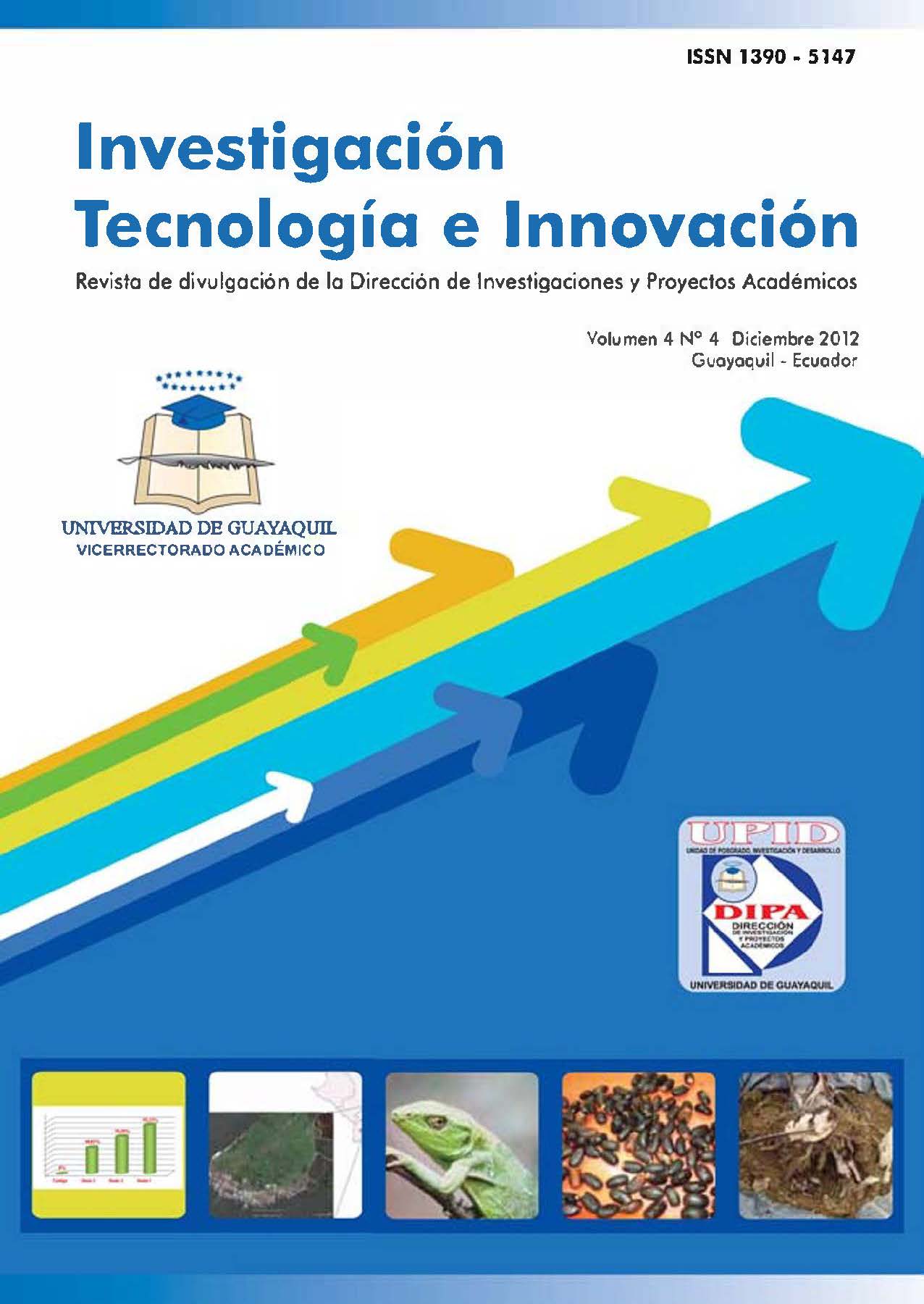Recovery and agronomic efficiency of nitrogen fertilizers alone and combined with leonardite in rice
DOI:
https://doi.org/10.53591/iti.v4i4.1200Keywords:
Agronomic efficiency, recovery efficiency, leonardite, controlled releaseAbstract
Nitrogen fertilizers applied in rice farming, lost more than half, the efficiency of these depends on multiple factors related to soil, weather conditions and crop management. The objective was to determine the best options for the application of nitrogen fertilizers, pear improve profitability of rice cultivation. lt is hypothesized that efficiency varíes according to the fertilizer source and that the addition of organic compounds to improve the efficiency thereof Fertilizers studied were: Urea, arnrnonium sulfate, ammonium ni trate and controlled release LCI combined formulas (38-0-00-13) + LC2 (+11% S 39-0-0-0), fertilizer were applied alone and combined with leonardite, except for treatments with controlled release fertilizers, it was on a leve! of 160 kg N I ha. The agronomic and performance variables were analyzed with a randomized block design with three replications, the mean comparison was made with the Duncan test P = 0.05. The recovery efficiency ofthe treatment reached LCI (38-0-00-13) + LC2 (+ 11 % S 39-0-0-0) ammonium nitrate in admixture with leonardite reached a higher recovery efficiency when was applied alone economically controlled release treatment LC 1 (38-0-0 + 13% S) had the highest profit.
References
Alcívar, S.; Mestanza, S. 2007. Nutrición mineral del cultivo de arroz, En:Manual del cultivo de arroz Instituto Nacional Autónomo de InvestigacionesAgropecuarias. E.E. Boliche. Manual No.66. Guayaquil, EC.
CIMMYT. 1988. La formulación de recomendaciones a partir de datos agronómicos. Un manual metodológico de evaluación económica (Edición completamente revisada) D.F., México.
Dobermann, A. 2007. Nutrient use efficiency-rneasurement and management. Proc. of lntemational Fertilizer lndustry Association (IFA) Workshop on Fertilizer Best Management Practices. Brussels, Belgium. March 7-9.
Agueria, N. 1999. Adubacao e calagem. In: A cultura do arroz no Brasil. ReginaN. Baeta dos Santos A. Pacheco, E. ( eds.) EMBRAPA. Santo Antonio de Goiás, GO. Brasil.
Ferraris G.; Couretot L.; Toribio M.201 O. Pérdidas de nitrógeno por volatilización y su implicancia en el cultivo de maíz: Efectos de fuentes, dosis y usos de inhibidores. [En línea]. Pergamino, Argentina. Recuperado el 8 de octubre de 2012, de: http://www.ipni.net/ppiweb/iaarg.nsf/$webindex/C8F050AB6A89293F032576350069A9A5/$file/l9.pdf (Autor de una revista exclusiva de internet).
Mora, G. 2007. Estudio de la eficiencia nutricional y determinación de dosis optimas de N, P, K en arroz (Oryza saliva L.) bajo riego. Tesis de Magíster Scientiae. Universidad de Guayaquil, Escuela Superior Politécnica del Litoral. Guayaquil Ecuador.
Isherwood, K. 1990. IFA, 5th AFA lnternational Annual Conference, 1999, [En línea] Cairo, Egypt. Recuperado el 6 de diciembre de 2006 de: http://www.fertilizer.org.
Instituto Nacional de Investigaciones Agrícolas. 2004. El Cultivo del Arroz en Venezuela. Comp. Orlando Páez; Edit. Alfredo Romero. Maracay. 202 p. (Serie Manuales de Cultivo INIA N° 1).
Instituto Nacional Autónomo de Investigaciones Agropecuarias. 2010. Informes del programa de arroz. INIAP. Estación Experimental del Litoral Sur. Virgen de Fátima, Ecuador.
Quirós H.; Rarmírez M. 2006. Evaluación de la fertilización nitrogenada en arroz inundado. Agronomía Mesoamericana CR. 17(2): 179-188.
Downloads
Published
Issue
Section
License
Copyright (c) 2012 Eison Valdiviezo, Lucila Sánchez, Sergio Valle, Haydee Macías

This work is licensed under a Creative Commons Attribution-NonCommercial-NoDerivatives 4.0 International License.






